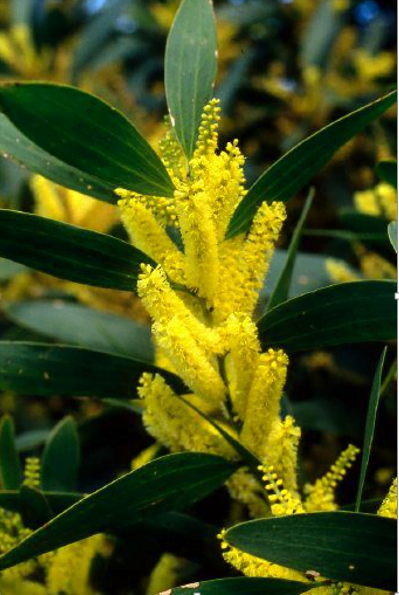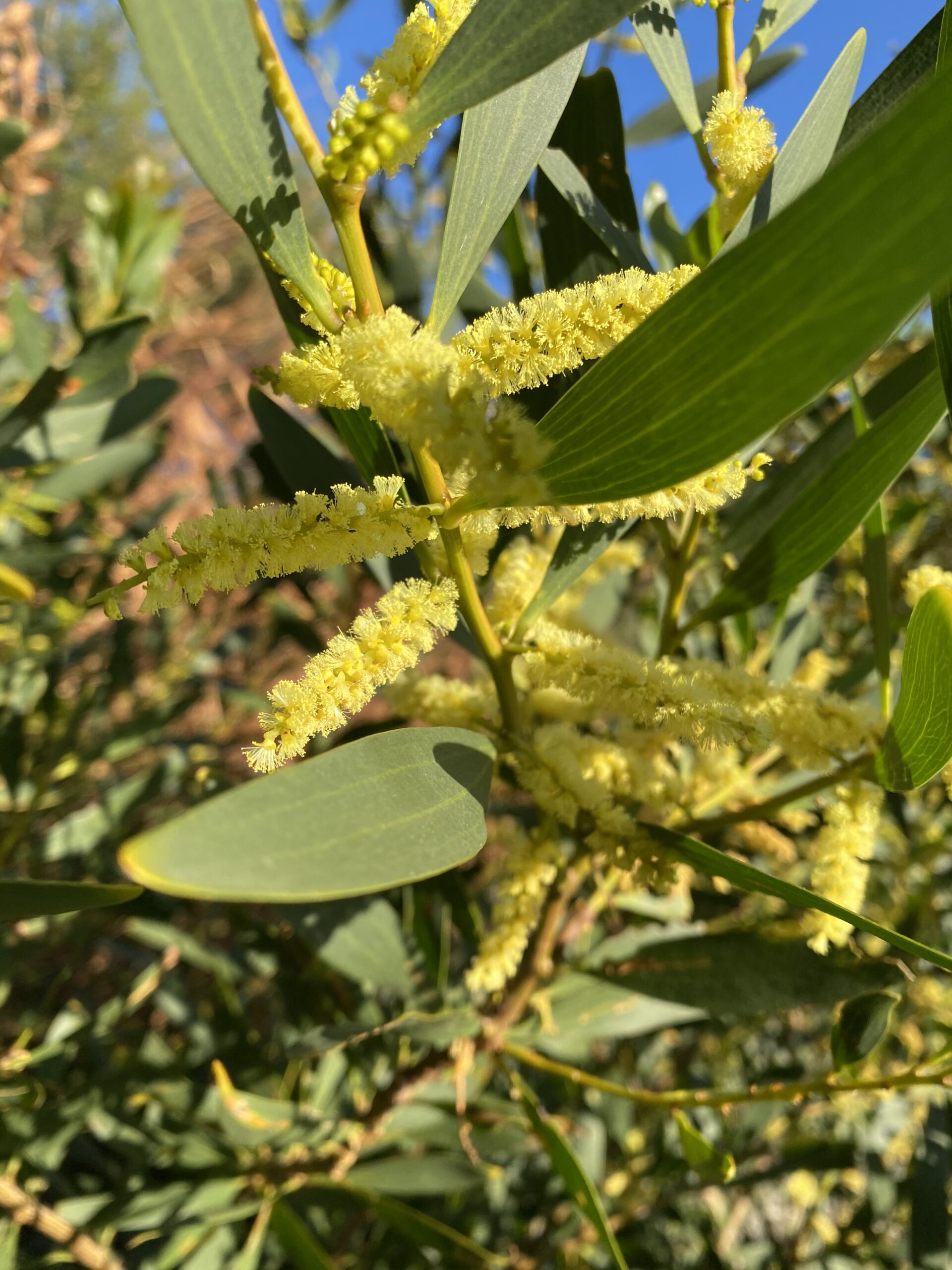
Acacia longifolia
Common name: Coastal or Golden Wattle
I grow best: Shrub to tree up to 8m
• Attracts birds, native bees and invertebrate creators
• Flowers June to October
• Well drained or sandy soils
• Cultural uses
• Eastern Suburb Banksia Scrub
Looks like: Shrub or tree 2-5m tall, leaves narrow linear- elliptic and straight with nerves being prominent. Flowers are dense and golden yellow, long and fluffy coming off a spike. The ‘leaves’ of this plant are actually flattened and widened leaf stalks (i.e. petioles), and not leaves in the true sense of the word. It is distinguished by its phyllodes. On very young plants, partially formed phyllodes can be seen which bear twice-compound leaves at their tips. As the seedling grows, the phyllodes that are more fully formed cause their leaves at their tips to become reduced and eventually vanish altogether.
Habitat and Growing: Acacia longifolia grows naturally in a wide range of environments, including woodlands and forests. Within these areas they are often found close to creeks, swamps or discovered landscapes. Where it has been grown and naturalised it has been found close to roads, swamps and native bushlands. Acacia longifolia grows best in full sun. It tolerates shade, but its foliage will become less dense. It tolerates salt, wind and some frost. The plant grows best in well drained soils and performs well on sandy soils. It tolerates some periods of drought and is good in coastal gardens. It can also be used in a garden as a windbreak or screen from elements. It has a useful life of around 10 years. A light prune after flowering will assist in keeping the plan bushy and flowering over the extended time period. Water moderately throughout the year when soil becomes dry.
Distribution:

Traditional uses: The seeds of a large number of wattle species are edible and may be harvested for grinding into a flour, for the production of bread, or an edible paste. The plant is valued as a source of food, medicine and for the quality of its timber, used in the production of a range of tools and weapons. Inclusive of boomerangs, spear throwers, spears, digging sticks, parrying shields and clubs. The gum of a number of wattle varieties is edible, with the flavour akin to that of a mild sugary sweetness, which can become unpalatable when offset by high amounts of the plant’s tannin. The gum in some cases was utilised in the production of a drink, which served as remedy to coughs, colds and chest infections. Gum could also be applied directly to cuts and abrasions as an antiseptic preparation, either in a solid or powdered form.

